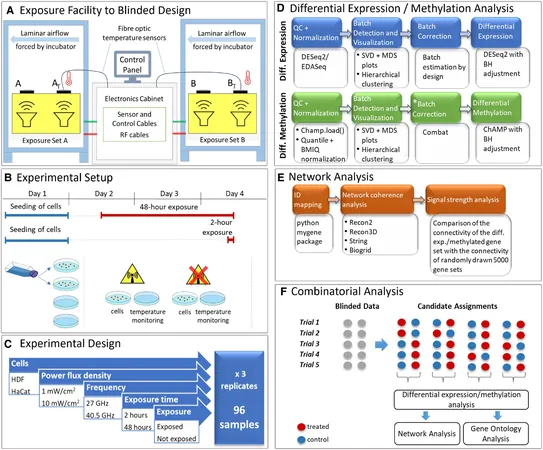
Revolutionary Nanosensor Set to Transform Brain Injury Monitoring Without Surgery
2025-04-25
Author: Yu
Breaking Barriers in Brain Injury Treatment
Every year, traumatic brain injuries (TBIs) lead to over 200,000 hospitalizations in the U.S., with around 69,400 lives lost in 2021 alone. For healthcare professionals, real-time monitoring of intracranial pressure (ICP) is crucial for effective treatment decisions. Yet, traditional ICP monitoring methods involve invasive surgeries, limiting their use primarily to critical care.
Innovative Tech from Georgia Tech
Enter researchers from the Georgia Institute of Technology, who have unveiled a groundbreaking ultra-thin nanomembrane sensor that allows for non-surgical delivery to the brain. This pioneering research, published in Advanced Healthcare Materials, could revolutionize how we monitor brain health.
Minimally Invasive Monitoring Solutions
Current standards for ICP monitoring include intraparenchymal microsensors and intraventricular catheters, both of which require surgeons to drill holes in the skull—procedures that pose risks of infection and bleeding. Recognizing these challenges, the Georgia Tech team aimed to create a device that eliminates these invasive steps.
Dr. W. Hong Yeo, a senior author of the study, expressed shock at the reliance on invasive techniques. He noted the existing limitations that affect the precision and reliability of data collection, emphasizing the need for innovative solutions.
How It Works: A Game-Changer in Brain Monitoring
The new sensor incorporates a capacitive thin-film technology that fits snugly into a standard angiographic catheter, enabling it to travel to the brain through blood vessels. This method means no surgical penetration of the skull is required, drastically reducing the risk of complications.
Dr. Yeo highlighted that the major advantage of this technology is the capability for precise real-time ICP measurement directly in the dural venous sinus.
A Technological Triumph
Creating such a compact and efficient sensor was no small feat. Yeo's team faced significant challenges in miniaturizing the device while ensuring it maintained sensitivity comparable to larger, invasive systems. Through innovative design and material choices, they successfully developed this impressive new tool.
In preliminary tests, the device exhibited excellent stability and functionality in simulated environments and was later tested in pigs, providing promising results due to their similar anatomical features to humans.
A Bright Future Ahead for Brain Injury Monitoring
The potential for this device in clinical settings is vast. Remarkably, it showed strong sensitivity even under minor wear conditions—an encouraging sign for its future use. With insights from clinicians, Yeo's team believes that commercialization and medical device approval could lead to swift integration into healthcare practices.
Yeo expressed ambition to further enhance the sensor platform by incorporating additional features to monitor various health parameters.
Hope for Enhanced Patient Outcomes
While preventing TBIs entirely remains a challenge, advanced monitoring technology such as this could significantly improve patient outcomes. Yeo's sentiment resounds: 'These advancements pave the way for broader clinical applications, minimizing complications, and enhancing patient care in neurocritical settings.'
This innovative approach not only heralds a new era for brain injury treatment but also underscores the relentless pursuit of solutions in the realm of healthcare technology.


 Brasil (PT)
Brasil (PT)
 Canada (EN)
Canada (EN)
 Chile (ES)
Chile (ES)
 Česko (CS)
Česko (CS)
 대한민국 (KO)
대한민국 (KO)
 España (ES)
España (ES)
 France (FR)
France (FR)
 Hong Kong (EN)
Hong Kong (EN)
 Italia (IT)
Italia (IT)
 日本 (JA)
日本 (JA)
 Magyarország (HU)
Magyarország (HU)
 Norge (NO)
Norge (NO)
 Polska (PL)
Polska (PL)
 Schweiz (DE)
Schweiz (DE)
 Singapore (EN)
Singapore (EN)
 Sverige (SV)
Sverige (SV)
 Suomi (FI)
Suomi (FI)
 Türkiye (TR)
Türkiye (TR)
 الإمارات العربية المتحدة (AR)
الإمارات العربية المتحدة (AR)